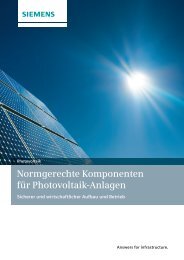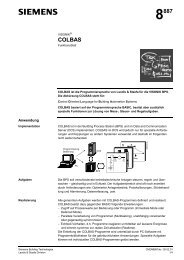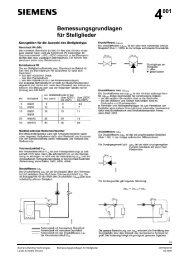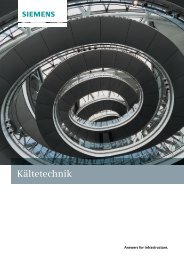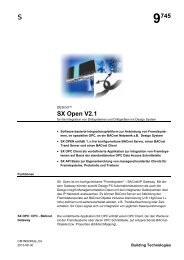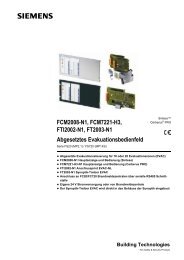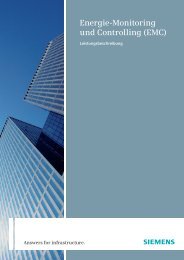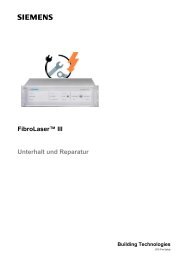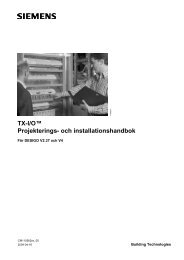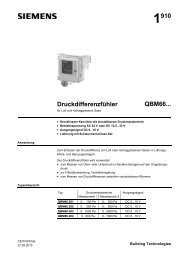Sensor Installation Handbook Preface 3rd edition - Siemens ...
Sensor Installation Handbook Preface 3rd edition - Siemens ...
Sensor Installation Handbook Preface 3rd edition - Siemens ...
You also want an ePaper? Increase the reach of your titles
YUMPU automatically turns print PDFs into web optimized ePapers that Google loves.
Practical tips<br />
84<br />
Basic circuit:<br />
If the air temperature downstream of the heat exchanger falls below the<br />
preset temperature, then:<br />
■ the supply/extract fans switch off<br />
■ the outside air/exhaust air dampers close<br />
■ the heating coil valve opens<br />
■ the internal pump switches on<br />
■ the frost alarm trips.<br />
The frost alarm is self-locking, to prevent the system from being switched<br />
on again automatically by the frost thermostat. The alarm must be acknowledged<br />
locally (remote acknowledgement is prohibited).<br />
To prevent overheating inside the unit, the heating coil valve is regulated<br />
by the frost protection thermostat while the frost alarm is active.<br />
Tips for avoiding nuisance frost alarms:<br />
The main cause of a frost alarm is a drop in temperature. It is possible, how -<br />
ever, for a frost thermostat to trip even when the heat supply is adequate.<br />
This may be due to one of the following circumstances:<br />
a) Changes in load, such as a change from one fan-stage to another,<br />
or a heat recovery system coming on/off load<br />
b) Temperature stratification<br />
c) System start-up after a shutdown<br />
To prevent the frost thermostat from tripping in situations where the temperature<br />
is adequate, the following basic circuits have proven effective:<br />
■ Preventive frost protection thermostat<br />
■ Stabilised start function<br />
■ Setpoint-regulated start-up control



